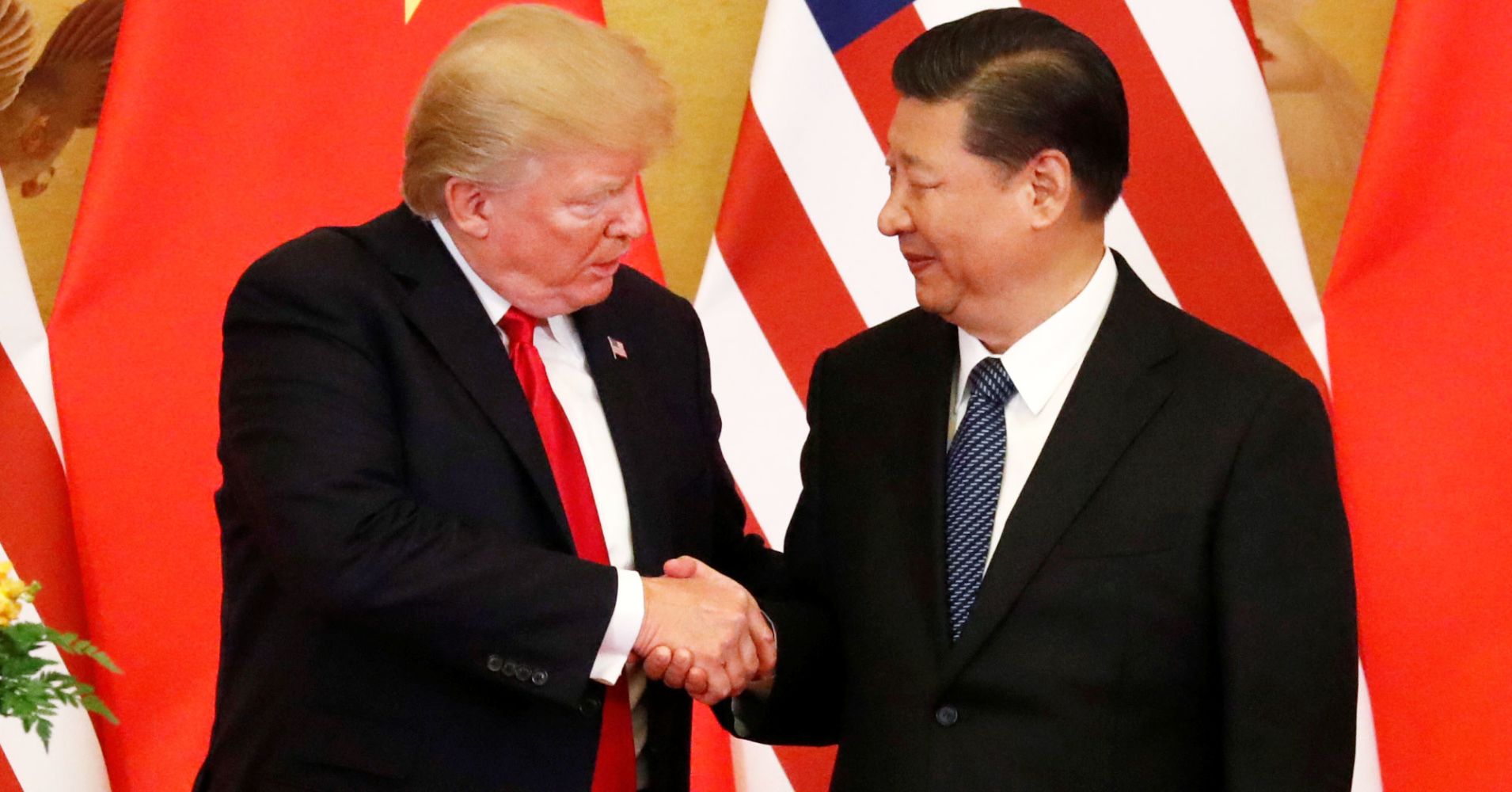
U.S. President Donald Trump and Chinese leader Xi Jinping are expected to discuss trade at the G-20 summit in Argentina this week — a meeting that’s watched globally for clues on where tensions between the U.S. and China are going.
The meeting comes after tit-for-tat tariffs between the two countries dominated headlines this year: The U.S. levied additional duties on $250 billion worth of Chinese goods, and China responded with retaliatory tariffs on $110 billion of American imports.
And there could be more in the works. Trump has threatened to increase those additional duties imposed on Chinese goods this year from 10 percent to 25 percent next January. The U.S. president also said he’s considering levying extra tariffs on another $267 billion worth of Chinese imports should Beijing retaliate.
The escalation in tensions between the world’s two largest economies is a threat to the global economy. And the upcoming meeting between Trump and Xi could either calm nerves or continue to keep the world on edge.
Discussions around trade are expected dominate the G-20 summit, with the meeting between Trump and Xi likely to overshadow much of the main agenda at Bueno Aires — but most experts are not expecting any breakthrough in the ongoing U.S.-China tariff fight.
Trump himself has indicated as much. Before departing for Argentina, the president told reporters that the U.S. is “close to doing something with China but I don’t know that I want to do it.”
To Gary Locke, former U.S. ambassador to China, that statement shows that Trump is preparing the world for a “no deal” outcome.
“Because there have been really no substantive negotiations over the last several weeks or months, at most, there might be an agreement for the president to withhold further tariffs, not adding to the tariffs already imposed on some $250 billion worth of goods coming from China, in exchange for discussions over the next several months,” Locke told CNBC’s “Squawk Box” on Friday.
There are two reasons why Trump would agree to hold back tariffs, according to Kirk Wagar, former U.S. ambassador to Singapore.
The first is that China seems likely to come to the table with “some real deliverables” to ease tensions with Washington, he told CNBC’s “Street Signs” on Friday. The other reason is the increasing political pressure that Trump is facing at home: American businesses and consumers have had to pay billions of dollars in taxes due to those higher tariffs on China, Wagar said. That has resulted in farm bankruptcies, and companies cutting jobs and closing plants, he added.
However, other experts have warned that Trump could well go ahead with the additional tariffs scheduled for January, and eventually on all Chinese goods that enter the U.S.
“Trump may want to keep the threatened increase as a way to further pressure China into a deal,” analysts from Geneva-based Pictet Wealth Management wrote in a report last week.
The U.S. and China together account for close to 40 percent of global gross domestic product, according to data by the World Bank. The two countries are also large consumer markets, important nodes in the global manufacturing supply chains and major investment destinations.
That means any hits to the two economies will spill over to the rest of the world. The International Monetary Fund has already downgraded its forecasts for global growth this year and next, citing trade tensions as a major risk that will derail economic activity worldwide.
Companies have also started to re-think their business strategies. Citi, in a poll conducted earlier this month, found that many of its clients are adjusting supply chains to circumvent additional tariffs.
Even without trade tensions, economic growth in the U.S. and China is expected to slow in 2019. Stateside, the effects of fiscal support from the Trump administration’s tax cuts will wear off while in China, structural reforms are putting a lid on growth prospects.
Experts have said that a trade war doesn’t benefit anyone, but the ongoing tariff fight between the two economic powerhouses is widely expected to drag out — some say through 2020 — due to the complexity of the underlying issues.
Trump has on many occasions attacked China for the massive trade imbalance between the two countries. Last year, the U.S. ran a $375.6 billion goods trade deficit with China, according to the United States Census Bureau. That means the U.S. bought more products from China than it sold to the Asian giant. In the first nine months of this year, that figure stood at $301.4 billion, according to that data.
The president has also repeatedly accused Beijing of unfair practices such as stealing intellectual property and creating barriers to American companies that want to operate in China. In particular, the Trump administration has taken issue with the “Made in China 2025” — Beijing’s strategic plan to make China a leader in key global industries, including technology. Many products targeted for additional tariffs by the U.S. are from sectors under the Made in China initiative.
But to some experts, the real issue is China’s growing influence on the global stage, which they say the U.S. wants to curb.
“We can’t expect a deal of breakthrough that fundamentally solves the issues between the United States and China because they’re too profound, they’re too deep, there are too many of them,” said Robert Daly, director of the Kissinger Institute on China and the United States at Woodrow Wilson International Center for Scholars.
“It’s not simply trade friction because the countries are involved in a global competition for pre-eminence which includes trade regime, security architectures, norms and practices, values and ideologies and there’s really nothing that Xi Jinping can put on the table that will satisfy Trump’s demand for structural change within China,” Daly told CNBC’s Sri Jegarajah on Thursday.
